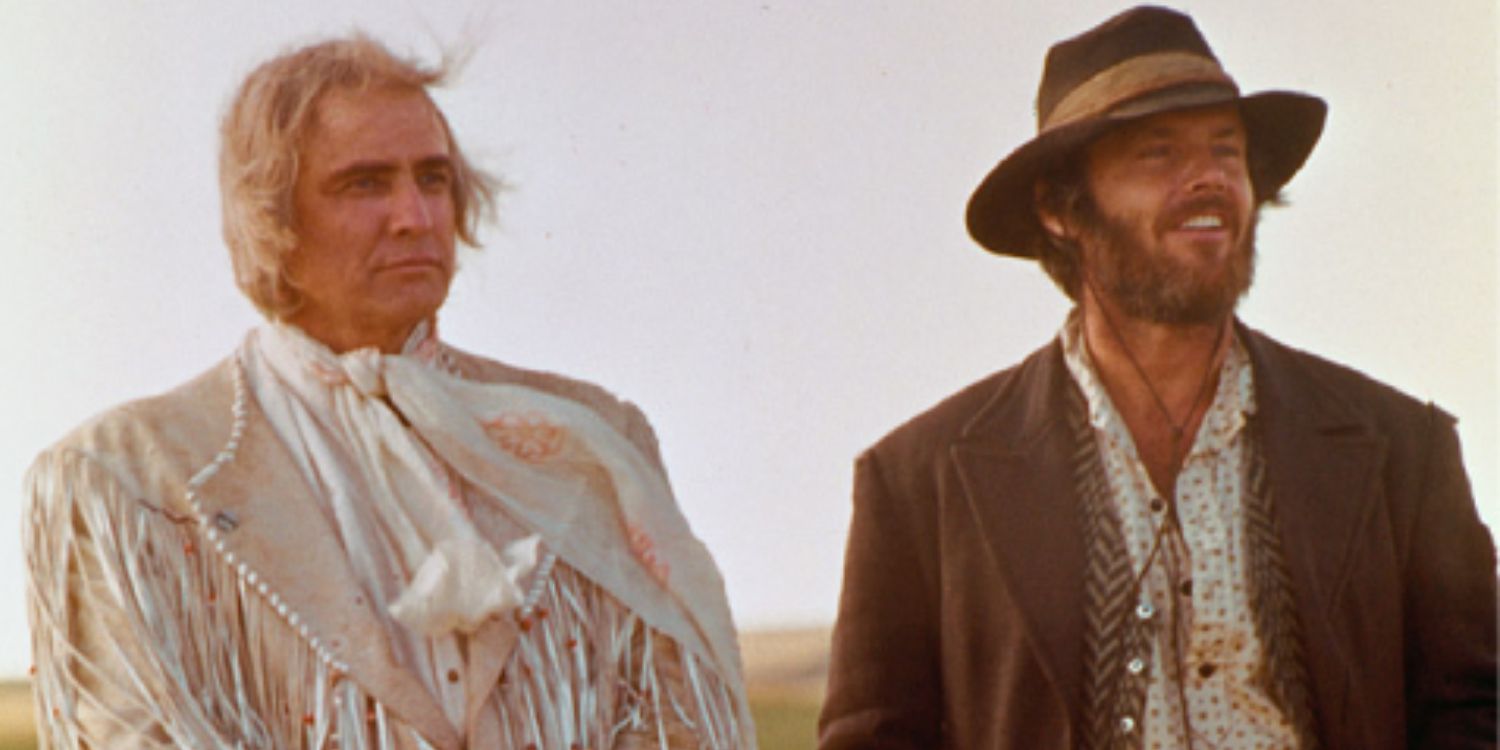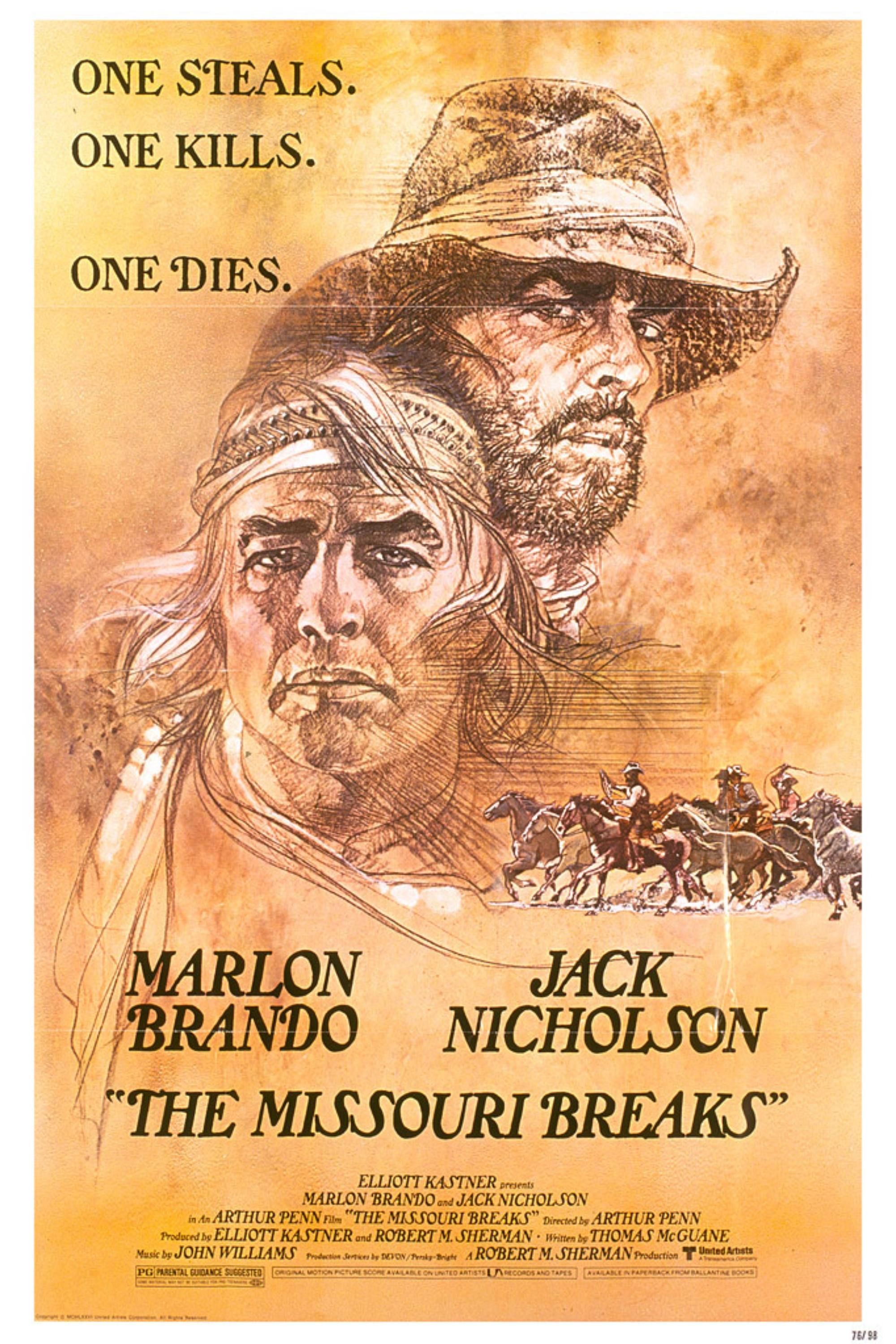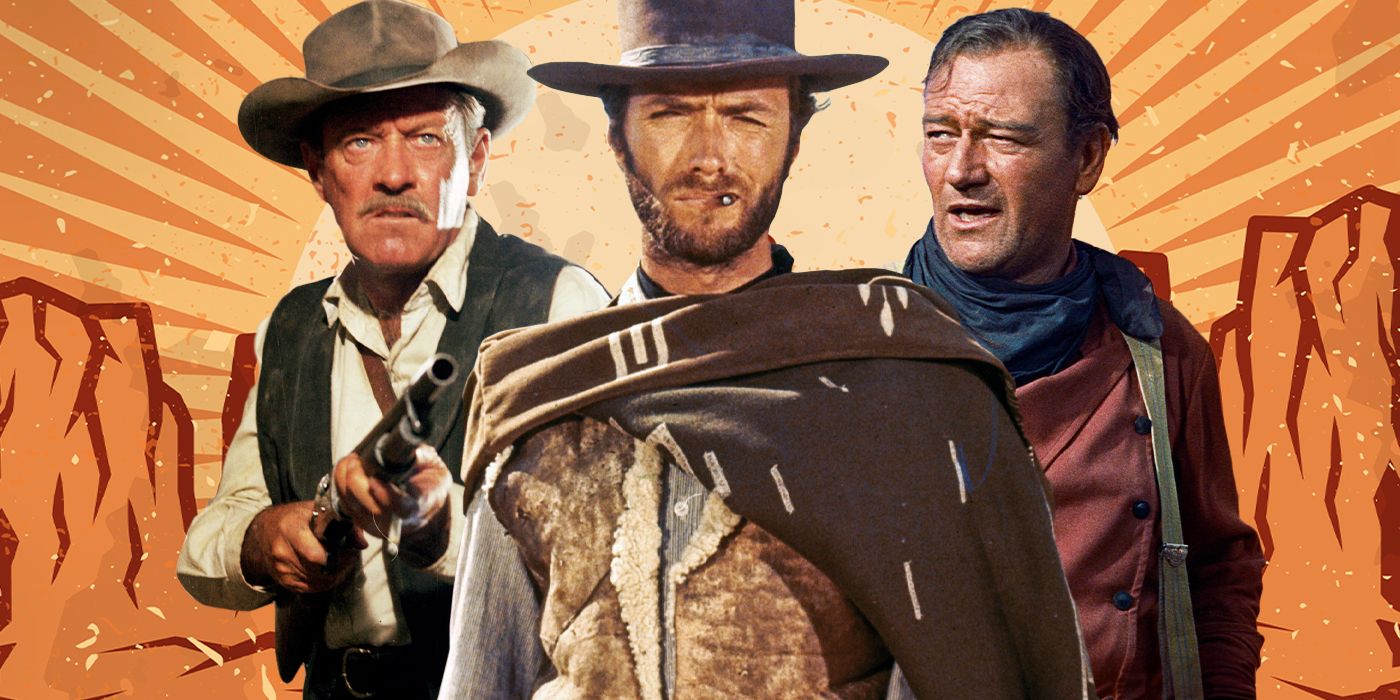If you've never seen or even heard of a Western called The Missouri Breaks, then it's about time that you had. If you scratched your head during the M. Night Shyamalan flick Old when one of the characters struggles to remember the name of a movie that starred Jack Nicholson and Marlon Brando, this is it. Let us reassure you that The Missouri Breaks is a revisionist Western that fans of Old Hollywood and New Hollywood alike will love. Full of meaty drama, unexpected violence, and an unlikely romance, this 1976 Arthur Penn-directed horse opera has fallen to the wayside over the years, but is well worth remembering for its stellar cast and unbeatable performances — even if Brando is a bit over-the-top.
'The Missouri Breaks' Is a Strange Western That Pits Marlon Brando Against Jack Nicholson
 Image via United Artists
Image via United Artists
In The Missouri Breaks, Jack Nicholson plays cattle rustler Tom Logan as he wanders about 1880s Montana looking for his next big job, only to set his eye on a well-off rancher named David Braxton (John McLiam), whose daughter, Jane (played by Kathleen Lloyd), Tom begins to fancy. The problem is that, anticipating more cattle thefts, Braxton hires a regulator named Robert E. Lee Clayton (Brando) to wipe out all the rustlers, and he's hell-bent on ensuring that none live to tell the tale. Though Tom has kept himself from being discovered, taking on the role of a small-time farmer, Lee Clayton runs hot on the trail of his outfit, picking them off like flower petals with a merciless and playful fervor that makes us wonder if this guy has a few loose screws.
Nicholson is particularly fine as Tom Logan, who, although he contains some trace elements, feels like a departure from the usual Jack Nicholson character. His strange-to-endearing romance with young Jane Braxton is one highlight of the film, as is the train robbery sequence, which reminds us that not all Old West outlaws were as cool, collected, or competent as Jesse James. The robbery, though successful, ends far from the way Tom planned it, as he's forced to climb down a massive wooden bridge with his newfound riches (which are mostly just single dollar bills) rather than ride speedily away on horseback. As Dr. Andrew Patrick Nelson expertly put it in his book, Still In the Saddle: The Hollywood Western, 1969-1980, "In spite of — or perhaps because of — Tom's decidedly amateur status, his plan displays a remarkable degree of common sense."
That's part of the fun of a picture like The Missouri Breaks, which aims to deconstruct the usual outlaw tropes, replacing them with a sense of historical realism and a whole host of personality flaws. Tom isn't your usual Clint Eastwood-inspired gunslinging protagonist or Butch Cassidy-type criminal who can think his way out of every new conflict. Instead, he's an average man on the open frontier who, like his friends, strives to make a living any way he can. Whether that's cattle rustling, train robbing, or even farming (which, as Lee Clayton points out, he's not terribly good at), desperation prompts Tom Logan to do anything but sit still and wait for his ill-fated allies to return from up north.
Marlon Brando Is Quite Unhinged in 'The Missouri Breaks'
Of all the characters in The Missouri Breaks, however, there is only one that is as equally strange as he is deadly, and that's Lee Clayton. Marlon Brando is a bit of a madman here, and that's sort of the point. Clayton is almost a stand-in for the mythic role of violence in the authentic American West, and he spares no one his wrath, even going so far as to toy with his prey before their inevitable demise. There's an uncomfortable humor to it as Clayton, much like Brando, is a man clearly in his own world, unaffected by the wants or needs of others. It's no wonder that The New York Times once deemed the actor's performance here as "out-of-control."
In fact, the actor once boasted to Time that he was single-handedly responsible for changing the way Clayton was perceived in the film's finished product, particularly by inventing the assassin's trademark weapon: a cross between a mace and a harpoon. "I always wondered why in the history of lethal weapons no one invented that particular one," the actor noted. "It appealed to me because I used to be very expert at knife throwing." Indeed, that skill is clearly on display here, and it leads to some pretty dastardly kills along the way.
Full of heartbreak, violence, betrayal, and notions of law and order in a lawless land, The Missouri Breaks is an often overlooked Western certainly worth watching, if not just for the powerful work of the two leads. As noted, Nicholson is great here, and the sheer oddness of Brando's role, coupled with the pair's dynamic scenes together, is nothing short of dramatic. Considering this is the only flick that both Marlon Brando and Jack Nicholson appeared in together, watching them perform on opposing sides (that bath tub scene is a particular highlight) in a Western feels like the most Hollywood thing ever, in the best of ways.
The Missouri Breaks is available to watch on Tubi in the U.S.

Your changes have been saved
The Missouri Breaks
Release Date May 19, 1976
Director Arthur Penn
Runtime 126 Minutes
Writers Thomas McGuane , Robert Towne










 English (US) ·
English (US) ·